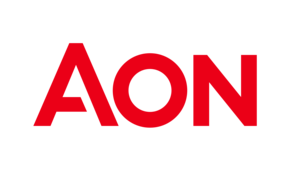
Dominic Grimley, Aon
Many defined benefit (DB) schemes have significantly developed their liability hedging programmes in recent years, making them a critical part of their risk management journeys. But are they working as expected in this volatile year?
What is hedging?
By 'hedging', we mean choosing assets that move closely in line with the scheme liabilities, and in particular removing unrewarded interest rate and inflation risks as far as possible. This requires the scheme to assess the benefit payments due out over time and to find investments that deliver a matching income.
Many schemes are moving towards hedging all, or close to all, of these risks using bonds or sophisticated Liability Driven Investment (LDI) solutions.
Challenges of hedging
Hedging comes with its challenges, and the most fundamental of all is deciding which funding measure to hedge against. Schemes may be focusing on two liability measures, shorter term funding and longer term buyout, but a hedging strategy cannot completely protect against the risks under both measures at once. This can mean more volatility for buyout affordability than for the ongoing funding level and a need to review the hedging strategy as you get closer to an annuity transaction.
Then there is the degree of accuracy in hedging. The hedging strategy is only as good as the information provided on the liabilities to hedge and the benefit cashflows due. However, these may last have been assessed in an actuarial valuation that is now out of date. Your scheme may have seen notable membership changes since that time, perhaps from member options exercises, that will have changed the profile of the scheme liabilities. Best practice would be to adjust the profile of the liabilities being hedged, when known, to avoid increasing risk through a mismatch.
As schemes mature and their objectives change, so too will their hedging strategy; with the management of your liability hedging becoming an ongoing exercise, rather than a complete locking down of the risks.
What about buyout?
One of the advantages of buyout is that it permanently transfers these risks to someone else, the annuity provider. The annuity provider has the advantage of scale and sometimes has access to bespoke hedging solutions created in-house that help to track the liabilities more accurately.
Increasingly, as more DB schemes close to future benefit accrual and their membership matures, there is an increasing focus on the Buyout position and the factors changing it over time. This will demand that time and effort is spent on maintaining hedging solutions until buyout is achieved.
The 2022 experience
Recent market movements have been challenging for risk management. Rising inflation will have changed schemes' risk profiles. It will also have added funding volatility, reflecting a common problem in hedging inflation risk. Most schemes increase benefits with inflation up to a cap, such as 5 percent each year, but the assets providing inflation-linked income generally do not reflect these caps and so may respond differently to changing inflation levels.
More subtly, inflation hedging usually tends to focus on the RPI version of price inflation, whereas the benefits may be partly linked to CPI. This adds to the challenge, although these two measures are set to align much more closely from 2030.
Focus on buyout funding
Buyout funding positions held up surprisingly well during the COVID-19 pandemic, in contrast, 2022 has already produced a range of movements in Buyout funding positions, both up and down, for different schemes. This reflects how well different hedging strategies have held up through market volatility and will encourage more trustees to take a closer look under the bonnet of their hedging strategy.
Hedging the Buyout funding position involves taking on credit exposure, to mimic the credit used in insurers' asset strategies, but choosing how best to add credit exposure to the liability hedge needs careful thought. The credit may not ultimately be transferred to the insurer on buyout, and so may later be sold, creating entry and exit trading costs. Additionally, the chosen credit investments must be a reasonable proxy for the assets insurers hold, which often includes diversification through more complex investments than can be achieved by, for example, tracking the overall UK credit market.
While there are clearly complexities, hedging is a powerful tool in the process of stabilising a scheme's funding level as it moves towards buyout. As such, giving it the care and attention it needs will allow a smoother route to the scheme's endgame.
This post is funded by Aon.









